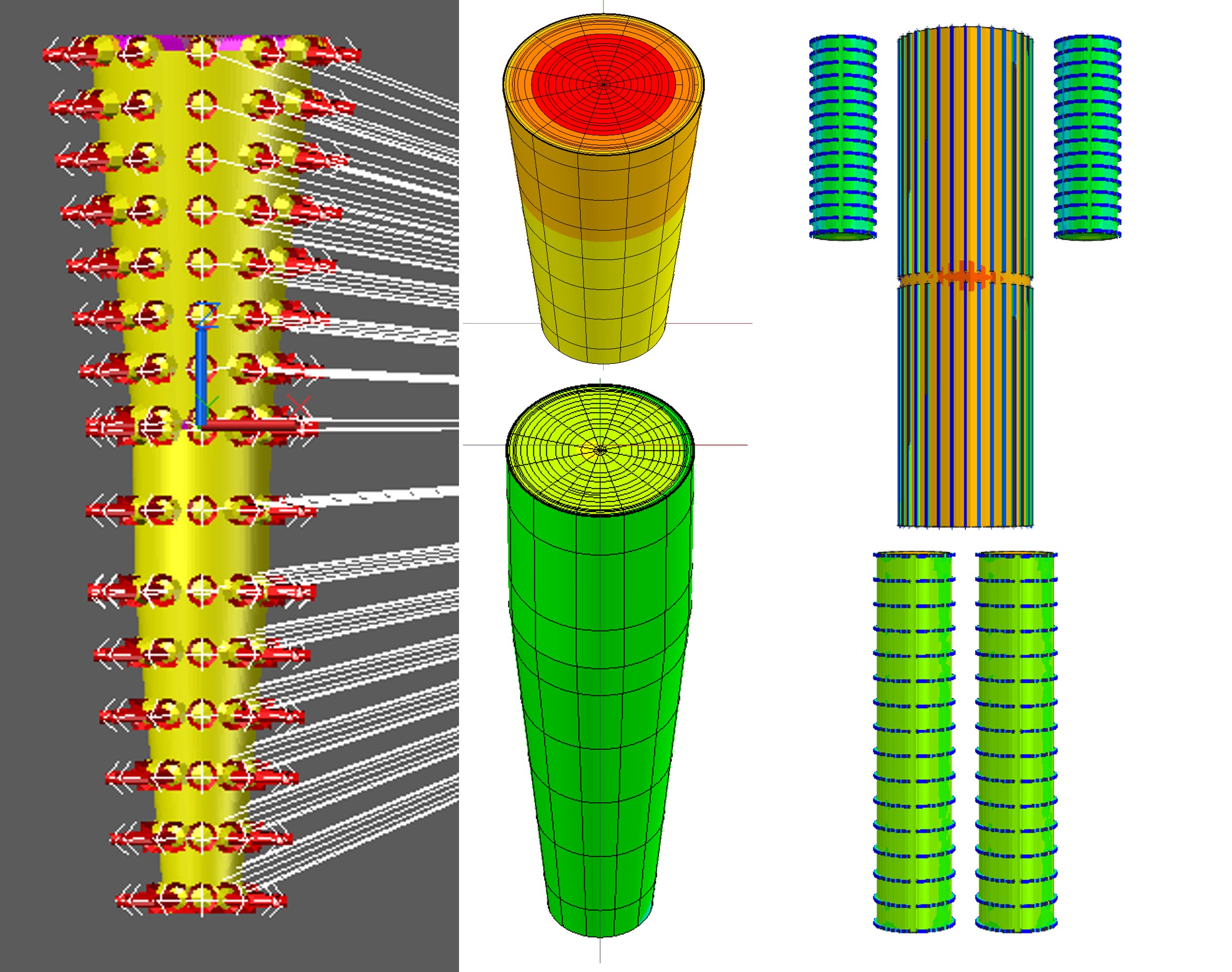
3D human thermal model of the thigh and lower leg (left and center) and finite element model of a parameterized LCVG (right)
NASA’s Human Research Program defines several hazards of human spaceflight, including radiation, isolation, distance from earth, gravity fields, and hazardous/closed environments. In particular, closed environments present a challenge for the design of environmental control and life support systems (ECLSS) and the subset of ECLSS that includes management of the human thermoregulation system. These challenges are amplified as missions become more complex, farther from earth, and include increasingly complex extravehicular activity (EVA). Since the Apollo missions, crew members have worn a cooling garment underneath the pressurized EVA suit to regulate the temperature of the in-suit environment. Current Liquid Cooling and Ventilation Garments (LCVG) have not changed significantly since the Apollo era and are therefore not optimized for current microgravity missions, the Artemis program, or future crewed missions to Mars. New numerical models could provide a basis for the generation of novel thermoregulation designs and technology, especially in more complex missions. This research focuses on the intersection of human thermoregulation modeling and the impacts of spaceflight on the human body. A new thermoregulation model of the human, focused on the limbs, expands on 60 years of human thermoregulation modeling, including all aspects of human thermoregulation: metabolic heat generation, heat transfer within the body, heat transfer to the atmosphere, and modeling of the cooling garment layers of the spacesuit. Specifically, novel updates to the modeling literature include detailed blood flow and LCVG fluid flow path modeling and optimization, while incorporating three-dimensional variability and view factor impacts for thermal radiation. The impact of a new validated human thermoregulation model has the potential to provide the theoretical basis for engineering new LCVG garments with innovative cooling technologies for next-generation EVA suits.
